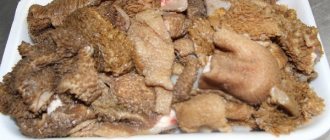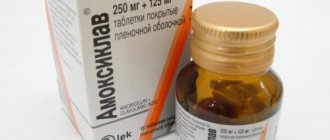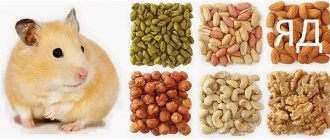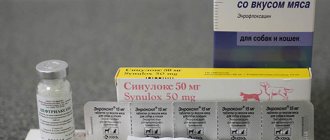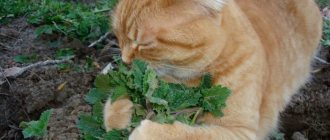Content
1. Benefits and harms, danger of allergies 2. Is there any harm? 3. Proper introduction of fruits into the diet 4. Volume and frequency of feeding 5. Feeding apples to small puppies and pregnant females 6. Choice of variety 7. Is cooking beneficial 8. Restoration of the body 9. Are there quality substitutes 10. Video: 11. Let’s summarize
The basis of the animal's diet is meat. As a supplement, the predator is given porridge. And fruits and vegetables are an addition. But plant foods contain quite a lot of useful substances, vitamins, and microelements. All of them have a beneficial effect on the dog’s body. Apple has a number of beneficial properties. But eating fruit must be carried out taking into account certain rules and without exceeding the dosage. How to feed an animal correctly?
What to do if the dog becomes ill?
First of all, it is necessary to find out the cause of the malaise:
Allergy
In case of an allergy, the following symptoms may appear: the dog itches, redness and rashes appear on the skin (usually in the ears and paws). The eyes may become red and watery.
In this case, you should immediately exclude the fruit from the diet and give the dog an antihistamine (for example Suprastin or Allervet).
Food poisoning
If the fruits turn out to be of poor quality (excess nitrates), or you did not wash and peel the apples properly, food poisoning may occur. Symptoms of poisoning: gastrointestinal upset (loose stools, vomiting).
In this case, you should also exclude the fruit from the diet and give the animal any absorbent (a means for quickly removing toxins and other harmful substances). This could be Activated Carbon, Smecta or Enterosgel.
In case of food poisoning, it is important to ensure that your dog drinks fresh water. Diarrhea and vomiting severely dehydrate the body.
If the dog does not drink water, it should be forced to drink. It is advisable to “put” your pet on a special lean diet for a couple of days after poisoning, excluding all vegetables and fruits. This can be boiled meat with the addition of rice water.
Binge eating
Overeating fruit is accompanied by the same symptoms as poisoning: bloating, gas, diarrhea and nausea. First aid is the same as in the case of food poisoning.
Benefits and harms, danger of allergies
Apple is the most affordable fruit. At the same time, it is completely safe for the body. Nutritionists advise giving applesauce as complementary food in the first weeks after the birth of the baby. Carrots and apples are the two most affordable products. They allow you to normalize digestion, as well as provide access to vitamin-containing substances. It is not advisable to completely remove apples when making up your dog’s diet. Limitation – individual intolerance.
Regular and dosed introduction of apples into the diet will bring the following benefits:
- Ensure that the body is saturated with fiber necessary for the normal development and growth of the animal, as well as carbohydrates.
- Normalize and stabilize the functioning of the digestive system, eliminating cases of constipation and diarrhea.
- Strengthening the immune system. The apple contains a sufficient amount of vitamins (C, B1, B2, P) that can strengthen the immune system.
- Increased protection against viral and infectious diseases.
- Saturation of the body with beneficial microelements (manganese, potassium, iron, calcium, etc.).
- Strengthening the immune system, normalizing the functioning of the nervous system, musculoskeletal structure
- Strengthening gums and jaws, and cleansing enamel from yellowness.
Any variety is a wonderful delicacy. It's better than chocolate chips or other sweets. It is better if feeding such “yummy” food depends on the dog’s behavior, correctly executed command, and training.
In general, an owner who regularly gives his pet a certain portion of apples creates a positive mood in the animal and relieves many health problems!
The benefits of apples for dogs
The first thing to note is that sweet fruits are very good for your teeth. Thanks to them, tooth enamel is cleaned naturally, and microbes are killed by sour apple juice.
The fruit strengthens teeth because it contains a lot of calcium, which is also important for the development and strengthening of the animal’s skeletal system.
The vitamins contained in apples, namely B2, C, B1, P and E, strengthen the dog’s immunity and thereby reduce the risk of contracting an infectious or viral disease.
Apples contain a lot of iron, which is also very useful, as it saturates cells with oxygen, which is of great importance for maintaining the animal’s body’s defenses.
If the dog’s diet includes an apple, the owner can be sure that his furry pet will always be in a good mood, active and healthy.
Is there any harm?
Without a doubt! If you give your dogs apples constantly and in large quantities. What is the harm?
The pulp of the fruit consists of fairly coarse fiber. If you consume a little fruit, it will only be beneficial, but exceeding the consumption norm stimulates the active removal of toxic substances and accumulated waste from the body. This will lead to gastrointestinal disorders and increased gas formation.
Excessive eating of apples can provoke the development of diarrhea, which results in dehydration. Emergency veterinary care and a long recovery process will be required.
Another danger is an allergic reaction.
The likelihood of a dog developing an allergy to apples is negligible. But if the fruit turns out to be of poor quality, with nitrates, the dog may begin to itch. Apples bought in stores are often coated with a layer of paraffin. In addition, chemicals that are sprayed on the fruits during their ripening period may remain on the peel. All this can also provoke allergies.
You will definitely avoid problems if you feed your dog (periodically) yellow or green fruits. It is better to avoid red-skinned apples; they may contain a strong allergen.
Possible harm
You need to feed your dog apples in moderate doses. Large amounts of this product can lead to increased formation of intestinal gases. The consequence of this will be bloating and abdominal pain. In severe cases, vomiting and intestinal colic may occur.
The fiber contained in apples can cause diarrhea. To avoid all this, you need to give apples to dogs with extreme caution.
Proper introduction of fruits into the diet
Feeding your pet an apple requires special preparation of the fetus. Simply picking a fruit from a tree and throwing it to a dog will definitely not do any good. But harm is quite likely!
The first feeding should be minimal. It is enough to give the animal a small slice, peeled and cored. Next, observe the dog’s behavior. If no external symptoms appear within 24 hours, then you can feed your pet an apple. You need to feed 20-40 minutes after the main diet. In any case, the fetus requires careful preparation:
- The fruit must be thoroughly washed and wiped dry.
- Peel the red fruit (a green or yellow apple does not need to be peeled)
- Cut out the core completely. The seeds have no benefit, and the cuttings can damage the esophagus and injure the stomach. Often it is in the core that the dangerous poison cyanide accumulates.
- Cut the prepared fruit into small pieces. For larger dogs, you can cut a medium apple into 2-4 pieces. For dwarf breeds, the optimal size is 1.5 - 2.0 cm piece.
Now the apple is ready to eat. You can safely give the fruit to an animal. If necessary, you can mix with honey and add to porridge. Do not mix with fermented milk products, there is a high risk of indigestion.
How to give apples to a dog
Fresh apples, peeled from seeds and hard partitions, will bring more benefit to your dog. This is especially important for owners of miniature breeds, pregnant or sick animals to take into account. The seeds contain about 0.6% vitamin B17 (amygdalin). In the stomach it breaks down to hydrocyanic acid, poison. And if a large dog, after eating several whole apples, has nothing to eat, then a miniature elderly or sick chihuah may well be poisoned. Hard partitions are also dangerous especially for miniature and small breeds. If swallowed whole, they can injure the wall of the esophagus or stomach.
You can mix fruit into your main meal or give it as a snack between feedings. Small dogs are grated, medium and large dogs are cut into pieces of a suitable size. Drying can be given as a treat during training.
You should not feed your dog apple cores with seeds and hard partitions.
At what age can you give apples to a dog?
From about 2.5 months, puppies begin to introduce vegetables, fruits, and greens into their diet. Apple, carrot, and pumpkin are among the safest foods. The first time they are given carefully, in small quantities, without mixing with others, so that if something happens, the source of the problem can be easily determined.
Volumes and frequency of feeding
The dog's main food is meat and cereal. Fruits and vegetables can make up no more than 30% of the daily diet (total). It is better if the fruit is given to the dog as a reward. Proper feeding directly depends on body weight:
| Little ones | ½ fruit is enough, no more than 2 times a week. |
| Average | (body weight 10-25 kg) you can give 1 apple 2 times a week, not more often. |
| Large | Easily digests 2 medium sized ones. Frequency – 2 times a week. |
An important addition: it is necessary to prepare the fruit regardless of the age, breed and size of the dog.
Healthy fruits
Today, supermarkets and markets offer an abundance of familiar and native fruits, as well as exotic overseas ones, unknown to many. You want to try everything yourself and be sure to treat your pets. Is it worth doing this, or do you first need to figure out which fruits can be fed to dogs and which ones cannot?
Apples
The most common, familiar, all-season and affordable apples are eaten with pleasure by both people and dogs. They are completely safe for animals, contain vitamin C, iron, and fiber, which have a positive effect on the functioning of the intestinal tract, improving peristalsis. Apples can be given raw, baked or dried. For a large dog, half an apple a day is enough, for a small dog - 2-3 pieces. A prerequisite is the removal of seed stones. They contain a toxic substance.
Pears
A sweet treat that contains important microelements, vitamins and fiber is pears. And regularly eating half a hard pear reduces the risk of stroke in a dog and works as a preventive measure for the formation of dental plaque. The pear should be peeled and cored.
Watermelon
Seasonal and beloved by almost all dogs, melons are a crop. Watermelon is perfectly digestible, as it consists of 90% water. It quenches thirst well and provides the body with a sufficient amount of potassium. It is not advisable to give peels and seeds to your dog.
Melon
Another tasty and healthy melon crop. Melon contains beta-carotene, fiber, vitamins and organic acids. But it should be given with caution, little by little, as a large amount can cause diarrhea.
Peaches
Dogs like sweet, juicy fruits. Contains vitamin C, magnesium, calcium and dietary fiber. Peaches must be pitted before feeding the dog.
Bananas
Well known, but still not typical fruits for our latitudes. They have a lot of potassium and no fat at all. Dogs love bananas for their sweetness. But it is precisely the high content of carbohydrates that does not allow them to be given to animals in large quantities or often. A few small pieces 1-2 times a week will be enough.
Citrus
What citrus fruits can dogs eat and is it possible at all? Here opinions differ. Some veterinarians do not prohibit giving an animal 1-2 slices of orange, tangerine or grapefruit. They contain quite a lot of vitamin C, and in the cold season it is extremely necessary. They can help dogs with poor appetite by stimulating the digestive process.
But some veterinarians and experienced dog lovers are categorically against dogs eating citrus fruits. It is believed that they negatively affect the animal’s olfactory system. But there is no scientific confirmation of this. In addition, citrus fruits are a strong allergen. Therefore, if you decide to treat your pet to a slice of orange, observe the body’s reaction and, if anything happens, immediately take him to the veterinarian.
Berries
Strawberries, raspberries, blueberries, rowan - sweet berries can be given to a dog without fear. All of them contain vitamins and microelements that are important and beneficial for your pet’s health. But they contain berries and quite a lot of sugar, so uncontrolled consumption of them by dogs is undesirable. Raspberries have anti-inflammatory properties and are desirable in the diet of dogs over 10-12 years old with joint problems.
What other fruits can be given to dogs? Persimmon - not all dogs like its astringent property, but those with a sweet tooth eat it with pleasure. It is worth limiting the consumption of persimmons to half a fruit no more than once a week. Plum is a fruit for everyone. Plums can be given to dogs, but little by little and with caution. Everyone knows their ability to weaken the stomach. They work the same way on dogs.
You may be interested in: What cereals can be given to dogs.
Feeding apples to small puppies and pregnant females
Nutritionists recommend introducing yummy food into the diet of newborns, starting from the age of two months. Naturally, in the form of puree. This will ensure the normalization of the functioning of internal organs and saturate the body with essential vitamins. Gradually, the proportion of fruits in the diet must be reduced, replacing it with meat and other foods containing protein.
It is also necessary to feed a pregnant female. The body of a pregnant bitch experiences high stress, and apples will help minimize it.
What is the benefit
The benefit lies in the content of vitamins B, C, E, B, P, pectin, iron, carotene, potassium, calcium and other microelements that have a beneficial effect on health, help strengthen the immune system, and reduce the risk of disease.
Useful actions:
- absorption of beneficial bacteria;
- functioning as a natural absorbent;
- antimicrobial effect;
- stabilization of digestion, eliminating constipation;
- normalization of the nervous system and musculoskeletal system.
Fruit acid is good for teeth and gums; under its influence, pathogenic bacteria die, the enamel is naturally cleansed, and gets rid of yellowness and plaque.
The fiber contained creates the necessary microflora in the digestive organs, promotes the elimination of waste and toxins.
Fruit treats are a healthy alternative to other rewarding dog treats.
Regular dosed consumption of fruit puts your pet in a good mood, eliminating a number of possible health problems.
In what form to give
Half of the fruit is removed from the peel, core, seeds, divided into small pieces, this portion is given twice a week. You can make fruit mousses and compotes without adding sugar; baked fruits are allowed; soaked, pickled, and candied fruits are prohibited.
Take the Attention Test! Find 10 differences! (click right here!)
Find the answer Are you bothered by some problem or question? Enter “Breed” or “Name of the problem” into the form, press Enter and you will find out everything about the issue that interests you.
It is possible to combine the product with cottage cheese and cereal porridges. Dried fruits are included in many ready-made dog foods. Plant food does not replace the pet’s main diet, but acts as a useful addition.



